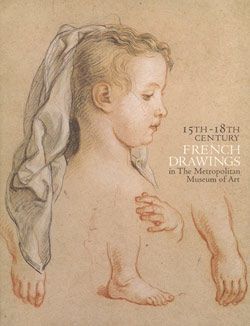Figures in a Roman Arcade
Hubert Robert French
Not on view
From early in his career in Italy, Hubert Robert created architectural capricci (views combining existing monuments in imaginary compositions), in the manner of the Italian masters Giovanni Battista Piranesi (1720-1778) and Giovanni Paolo Panini (1691-1765). In this red chalk drawing, Hubert Robert lends a sense of observed reality to the representation of an invented place. The large scale of the structure and the axial perspective framing the view of another building both recall the palazzo dei conservatori in Rome, although the architectural vocabulary, in particular the groin vaults and the Doric order of the capitals are reminiscent of certain rooms in the Villa Albani. Both buildings housed important collections of ancient art, the former was open to the public, the latter was private.
In 1762, Hubert Robert made several views of the both the palazzo dei conservatori and the Villa Albani, always choosing a central perspective (see exh. cat. Hubert Robert (1733-1808) un peintre visionnaire, Paris, 2016, no. 13-14). The Met’s drawing, made a year later, is distinguished by its quick and controlled handling, which allowed Robert to create a tonal range of red chalk in order to describe effects of light and shadow. To animate his urban spaces, Robert added figural groupings that draw from his sketchbooks. Certain figures, such as the mother and child in the foreground and the group of soldiers at right, were part of the composition from the outset and are drawn on untouched paper; others, presumably added at a later stage, are drawn over the lines of the architecture. The dress of the figures ranges from togas evoking the antique to more contemporary garb, ultimately creating a temporal ambiguity. By depicting an idealized architectural setting in an indeterminate time period, the artist focusses less on nostalgia than on everyday life.
Sarah Catala (December 2016)
Due to rights restrictions, this image cannot be enlarged, viewed at full screen, or downloaded.




